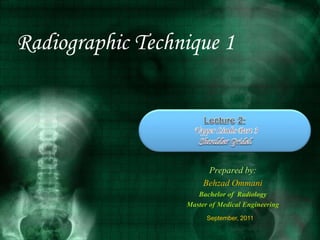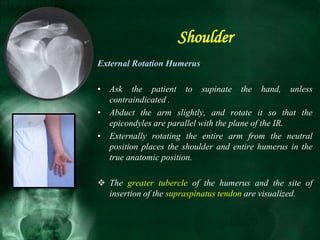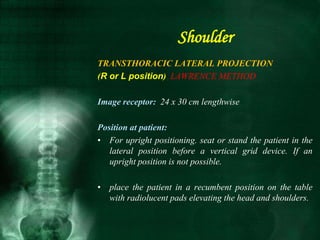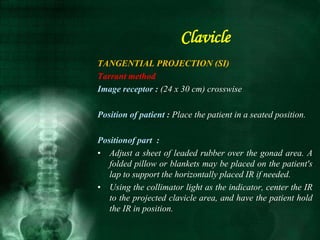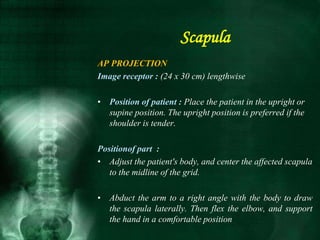This document provides guidelines for various radiographic projections of the shoulder, shoulder joint, acromioclavicular joint, and clavicle. It describes patient positioning, part positioning, image receptor size and orientation, central ray angle and direction, and clinical indications for 11 different shoulder projections, 9 shoulder joint projections, 4 acromioclavicular joint projections, and 6 clavicle projections. Precise positioning is emphasized to demonstrate relevant anatomy and identify injuries like fractures or dislocations.
